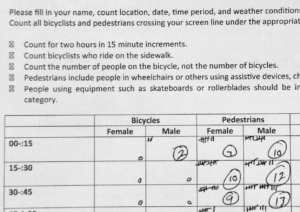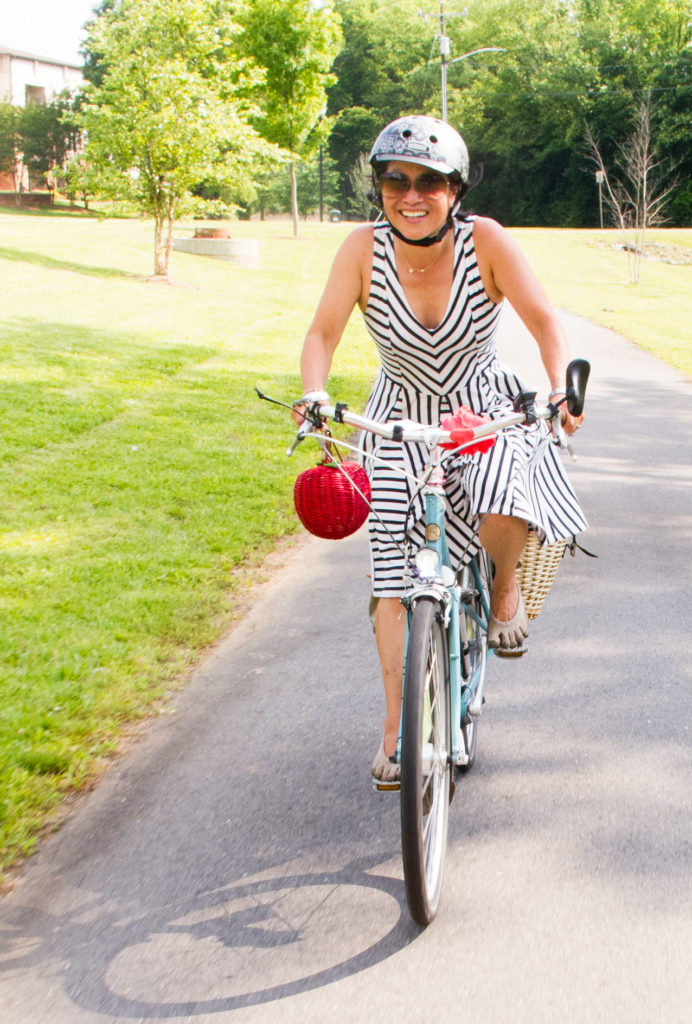Another thing I’m doing in my travel is bike and pedestrian counts at selected parts of the city transportation network. The data that exists on cycling volumes in different cities is very spotty; the national American Community Survey data only covers work commute cycling and isn’t spatially located within the city. Some cities also collect count data, but there is no national standard, and different cities have very different count programs. The National Bike and Pedestrian Documentation project is an attempt to regularize the collection and storage of count information, and I’m using NBPD’s methods and forms to conduct counts in the cities I’m visiting.
Basically, that involves sitting somewhere for two hours and counting the bicyclists and pedestrians (broken down by gender) who pass by an imaginary line across the street and sidewalk. Count instances are divided into 15-minute periods. After completion, counts will be uploaded to the NBPD database, where they can contribute to comparisons within the city and between cities.

One shortcoming I’m motivated by is the relative lack of data on non-commute utility cycling. It feels to me like cycling to cafes, restaurants, grocery stores, and other short-range trips has increased significantly in the past 10 years in the Bay Area, and my hypothesis is that this increase is connected to the rise of bike culture in the U.S.
So in Charlotte, in addition to conducting counts downtown, I tried a hip restaurant/cafe district and a Bike Benefits brew pub which supports cycling events (and lights up on Strava’s heat maps).
Unfortunately, the location didn’t seem to matter much; in none of the places I conducted a count in Charlotte did I see more than 5 bikes in a 2-hour period. This was consistent with my experience on the road. I rode over 100km around the city, and seeing another cyclist was a rare event in my surveys. ACS has Charlotte’s mode share at 0.4%, and I didn’t find any evidence that there were secret pockets of utility cycling that ACS is missing.


